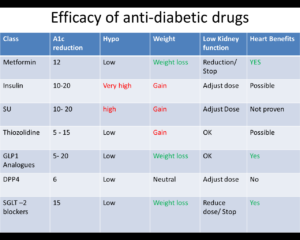Understanding carbohydrates and self administration of insulin
Assessment if patient can self administer insulin
- Question patient on meal and portion sizes and carbohydrate load
- Ask about insulin doses for hypothetical meals (eg 2 slices of bread or jacket potato)
- Is there a reasonable approach to calculating insulin doses.
- Can the patient administer insulin without difficulty
- If the above criteria is fulfilled then a trial with self administered insulin for 2 days can be tried
Patient determined doses
- Please allow patient to administer his own insulin under supervision
- Please allow patient to decide on his insulin dose .. the dose should be around the doses prescribed below
- Please record amount of insulin administered in the drug chart
- Please record blood sugars as normal
Instructions For Healthcare professionals
1) His baseline long acting insulin should be Tresiba (Degludec) X units .
a) This should not be changed.
b) If he has a hypo, then correct his hypo, ensure blood sugar is >5 then administer Tresiba
2) His baseline mealtime insulin is Y units with each meal but adjusted according to the regime below
a) His mealtime insulin can be adjusted as follows
i) No meal (omitted meal ) <20 grams carbohydrates– no insulin
ii) Half portion – 20 – 60 Grams carbohydrates Half insulin (1/2 Y) of Insulin
iii) Full portion – >60 grams carbohydrates Full dose (Y) of Insulin
3) Hypos
If Patient has symptoms of hypo, then please allow him to correct it in the first instance (2 biscuits should do it). However if he is confused or agitated, please act as you normally would, by correcting hypo and administering any corrective treatment
Carbohydrates are foods consisting of molecules of glucose.
Simple sugars Examples
Sugar 1 teaspoon – 5 grams
Cake average slice (100 grams ) – 60 grams
Biscuits 3 Rich tea biscuits – 20 grams
Biscuit 2 Chocolate digestive – 30 grams
Chocolate 2 squares from slab – 30 grams
Fruit Juice 200 ml orange juice – 20 grams
Fruit i medium orange – 20 grams
Complex sugars Examples and carbohydrates
Bread 2 slices – 40 grams
Rice – 1 large scoop 100 grams – 70 grams
Pasta 1 large scoop – 100 grams – 60 Grams
Noodles
Naan Bread
Cereal
- How much carbohydrates do we need?
- It does tend to vary from person to person and a sedentary person requires about 100 – 120 grams of carbohydrates. This increases to 150 grams with mild exercise and 200 grams with moderate exercise
- In practical terms a slice of bread is 20 grams of carbohydrates and a jacket potato (200 grams) is 50 grams of carbohydrates.
- How can I earn some carbs?
- Exercise is a good way to earn carbs. 1 mile of walking is about 20 grams of carbohydrates
- 1 Slice of Toast – 1 mile walking – about 20 minutes
- 1 Jacket potato – 2.5 miles of walking – about 1 hour
- Exercise is a good way to earn carbs. 1 mile of walking is about 20 grams of carbohydrates
- I have Diabetes so I need to eat..
- This is a misconception. We need to adjust your medications to your lifestyle rather than the other way around.
- Won’t my blood sugars drop too low?
- Yes it can. We may need to adjust your medications. In particular Sulphonylureas (Gliclazide, glimerperide etc) and Insulin ( any Type long acting and short acting) need adjusting when you cut down carbohydrates.
- I would like to have a toast when I feel hungry.
- Carbohydrates tend to hit our REWARD CENTRE and make us feel satisfied. So we do need carbohydrates for that reason. Try the following tips
- Keep some cut vegetables or hot soup in a flask on view in the kitchen
- Hot drinks take time to consume and this helps our brain realize that we have had food.
- Avoid buying foods that tempt you (Biscuits, chocolates)
- Do not wander into the kitchen out of boredom, step out into the garden to take your mind off food
- Have a big glass of water
- Carbohydrates tend to hit our REWARD CENTRE and make us feel satisfied. So we do need carbohydrates for that reason. Try the following tips
- What type of medication am I on?
- The following table will help you determine if you are at risk of hypos. If in doubt, please call your doctor
